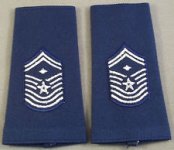Dennis The B
US Veteran
Because during and before WWII, there were right sleeve and left sleeve ratings. The difference being combat ratings and non-combat ratings, meaning during a combat situation, a combat rating had authority or seniority over a non-combat rating. Boatswainmate was a combat rating, Personnelman was a non-combat rating. It just happened to evolve into rating badges being worn on just one side.
The "right arm" rates included boatswain's mates, gunner's mates, torpedoman's mates, etc. I read, somewhere in the past, that the right arm rates (mates) reported up through warrant officers. Warrant officers had professional ratings which included torpedoman, boatswain, gunner, and others. The enlisted ratings were the "right arm" to the professional. And they were, as OLDNAVYMCPO stated, the "combat" ratings.
There are other "mates" ratings, such certain airman rates, and the old Pharmacist's Mates, which eventually became Hospitalman. The engineering and hull ratings also had professionals, such as electricians, and machinists, and their "assistants" were referred to as Electrician's and Machinist's Mates. The Airdales had Photographers and Aerographers, among others.
Right after WWII, all rating badges were transferred to the left arm.
PS - My commanding officer was COMCBLANT, and simultaneously Commander 3rd Naval Construction Brigade during the Viet Nam War. He was a Commodore, wore Captain's insignia, but rated a one star flag. He also reported to Commander Fleet Marine Force, and the Facilities Command at Norfolk. He also tooled around Davisville in an Austin Healy 1000, wearing a peacoat in the winter, and the saltiest looking white cover I had ever seen.
During Viet Nam, the Seabees were attached to Fleet Marine Force Viet Nam, and they rated the Marine EGA on their Viet Nam Campaign medals and ribbons. They also had odd deployments; Nam for 9 months, home for 6 months, and then 9 more deployed.



